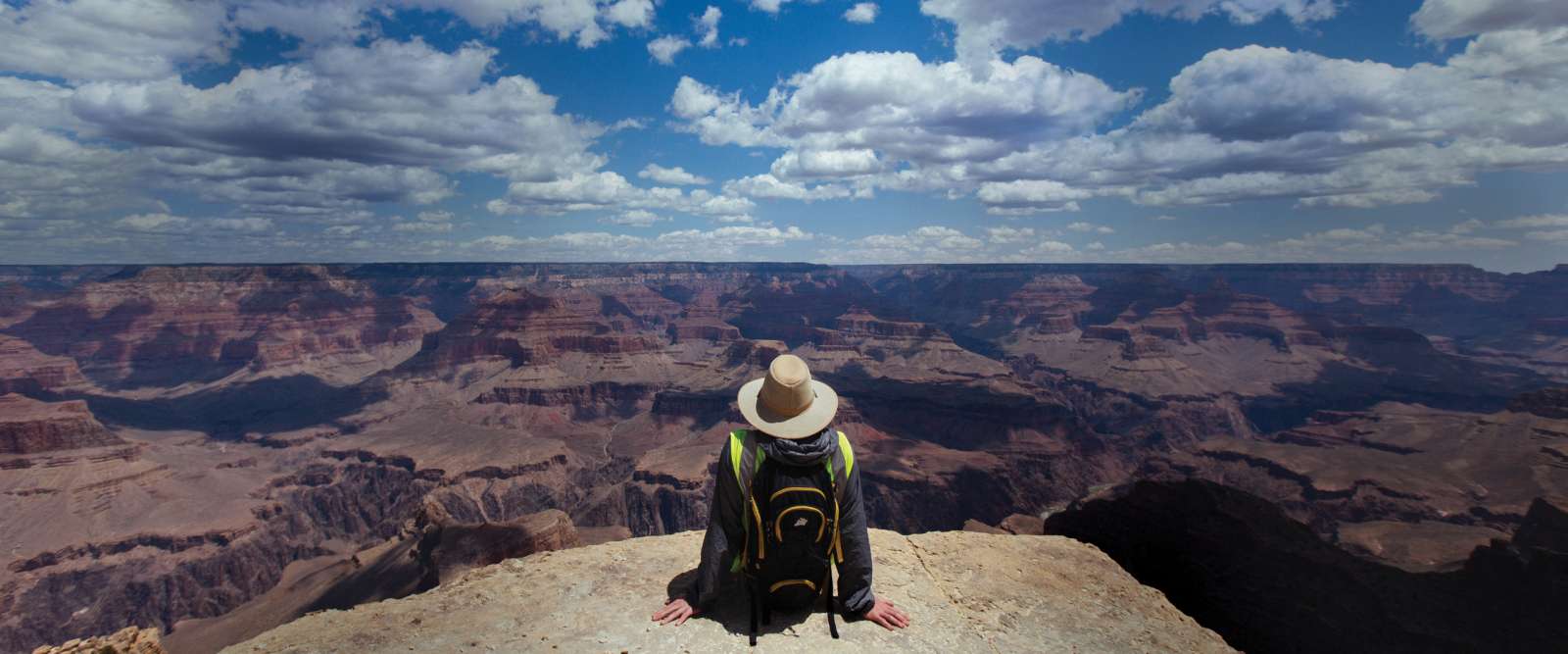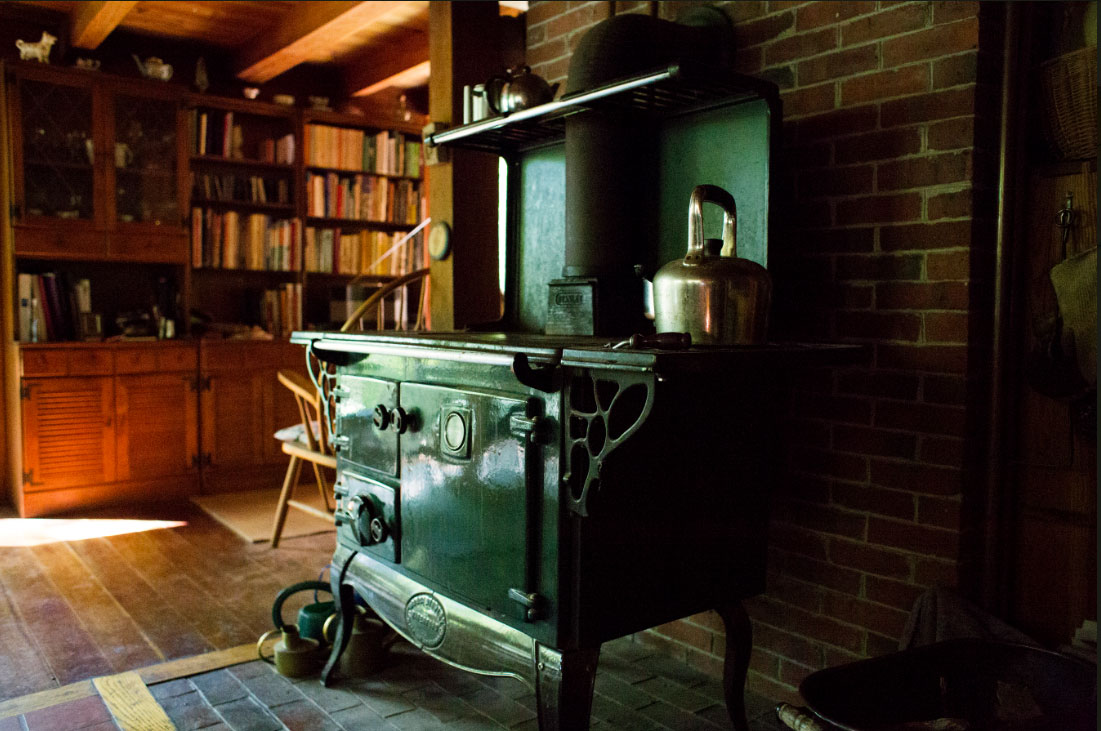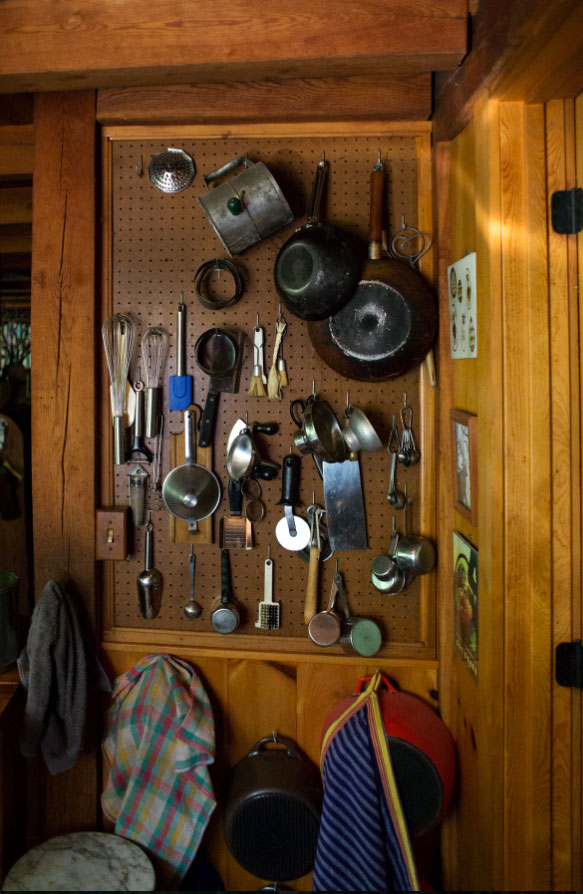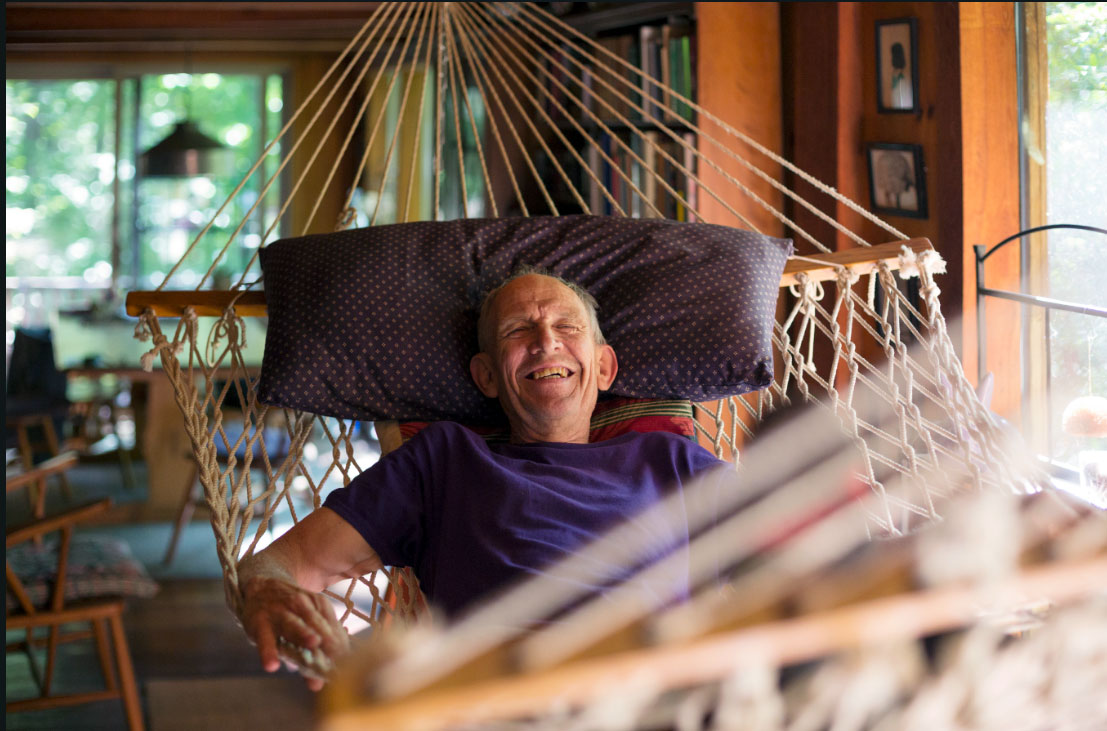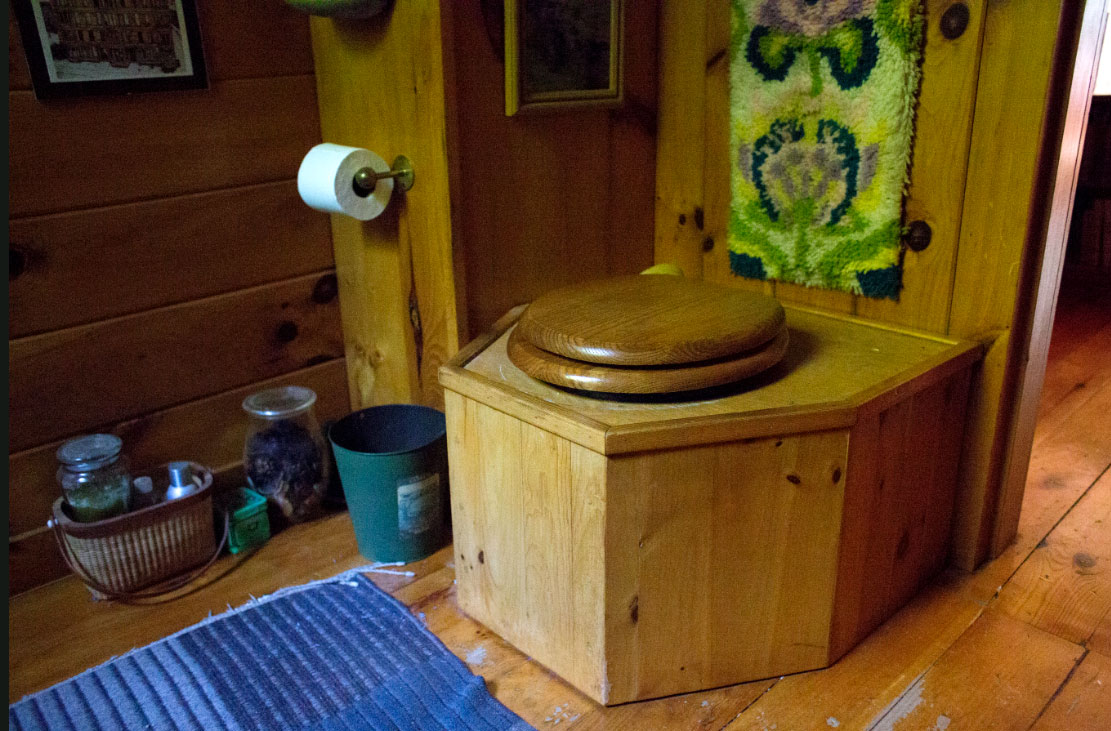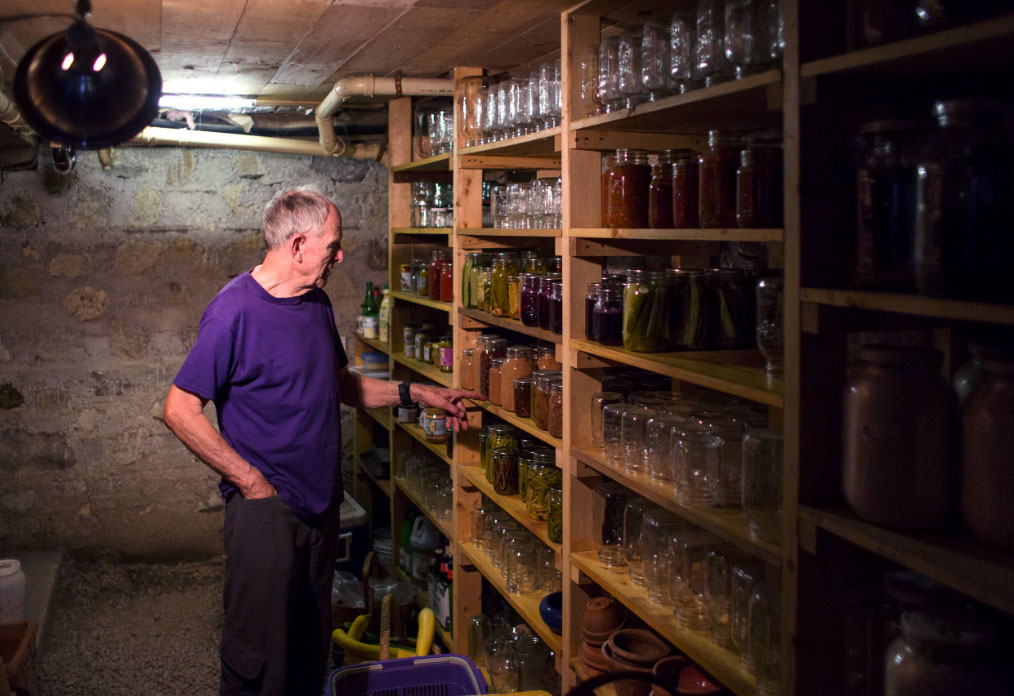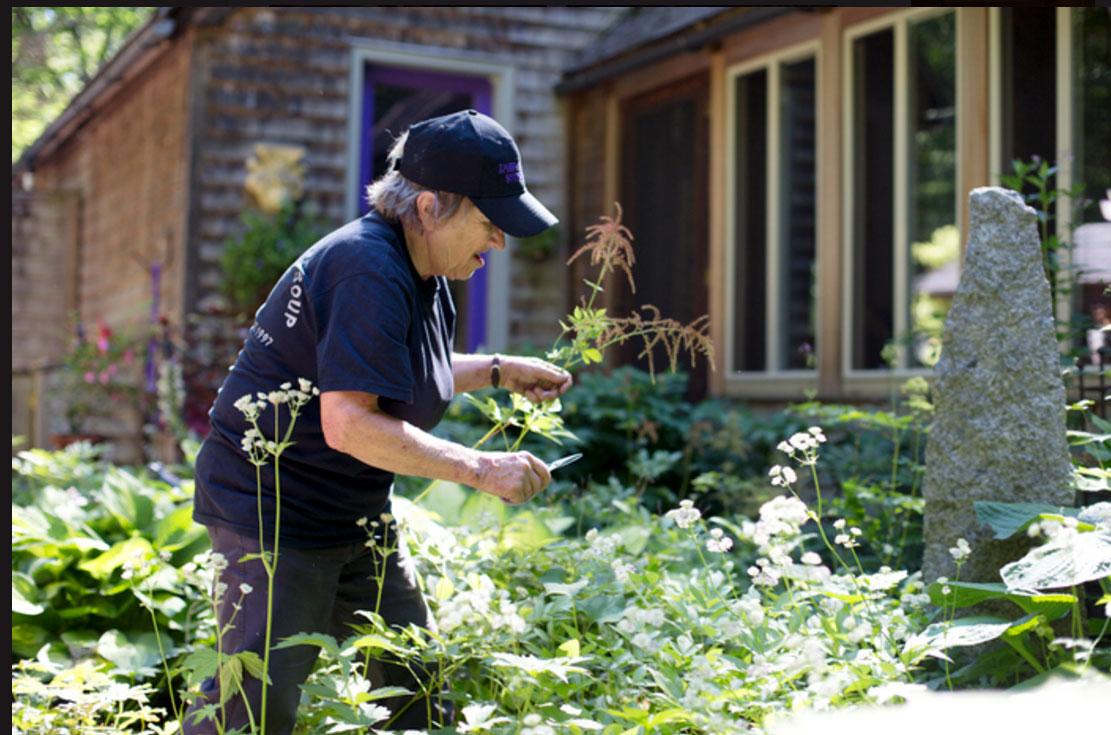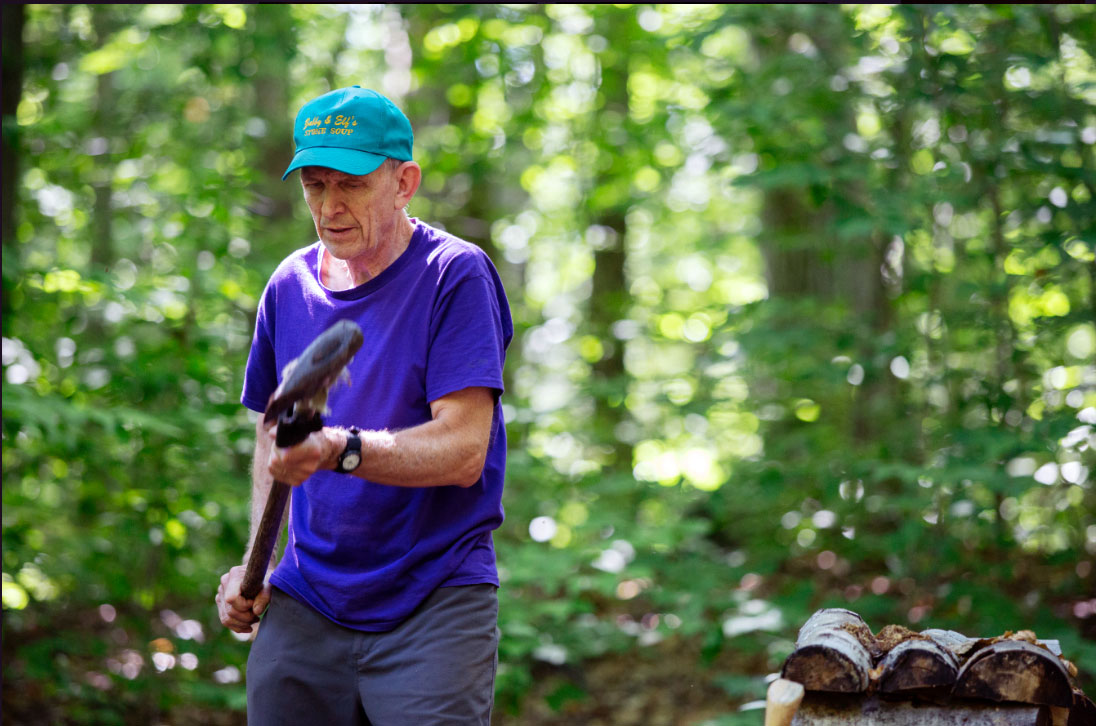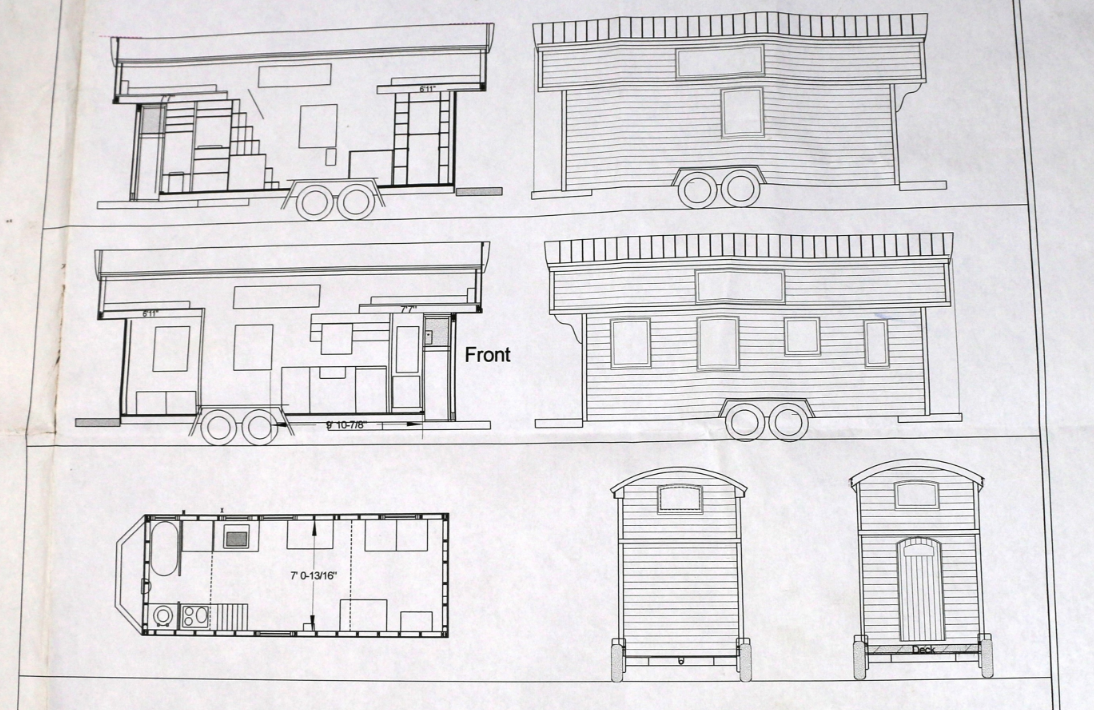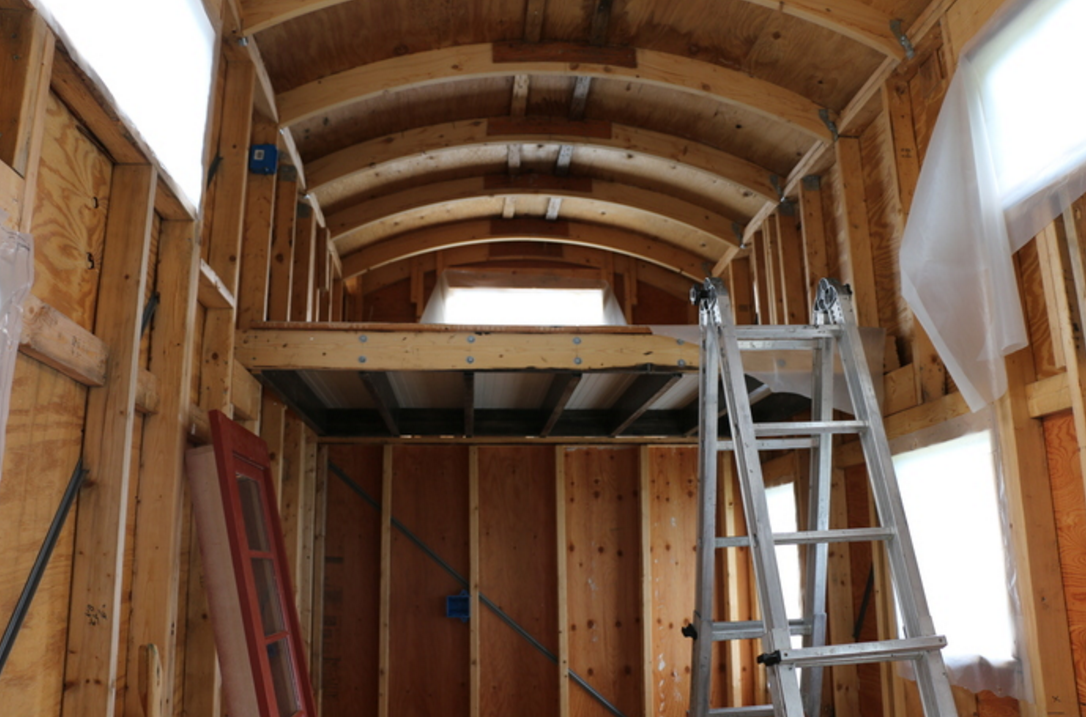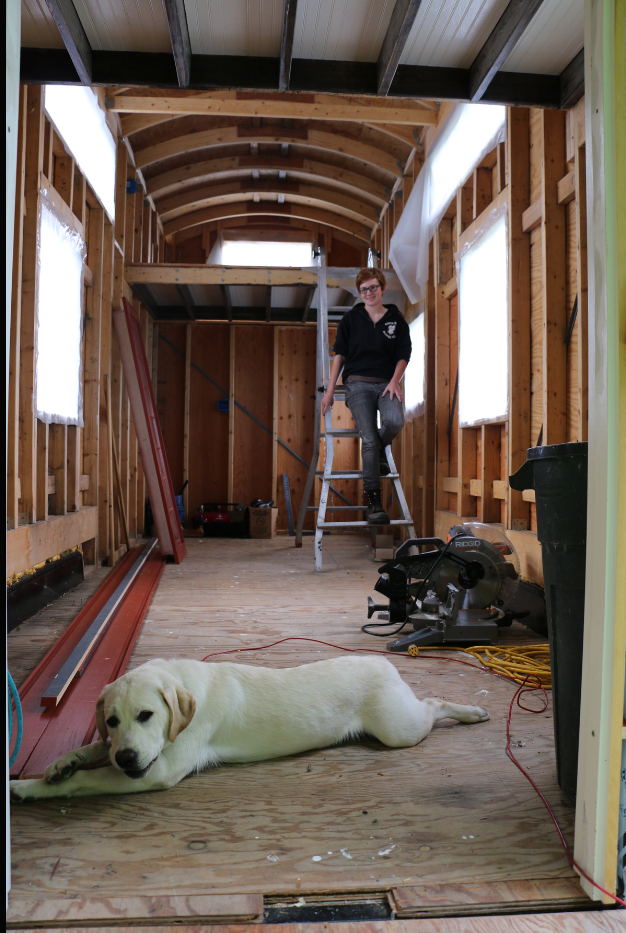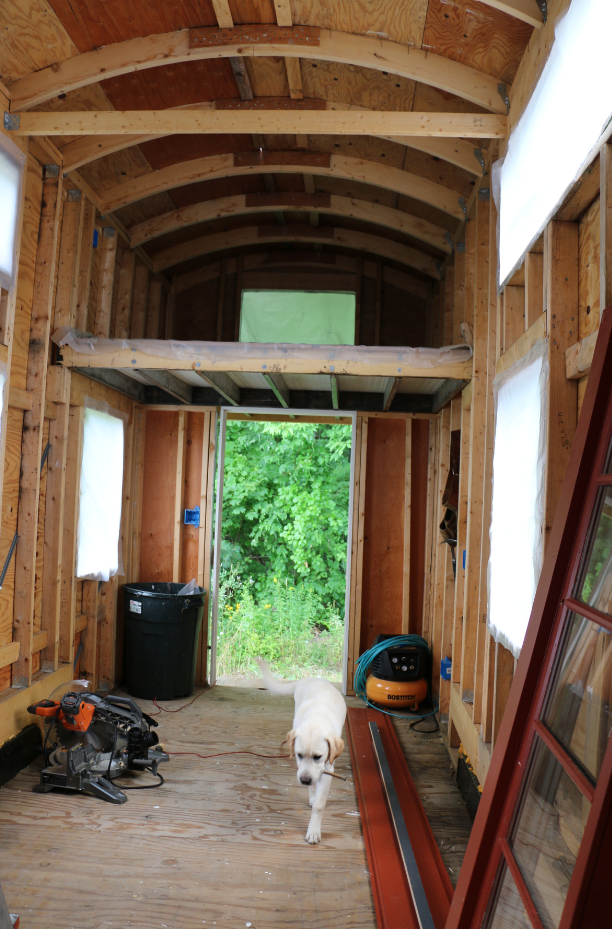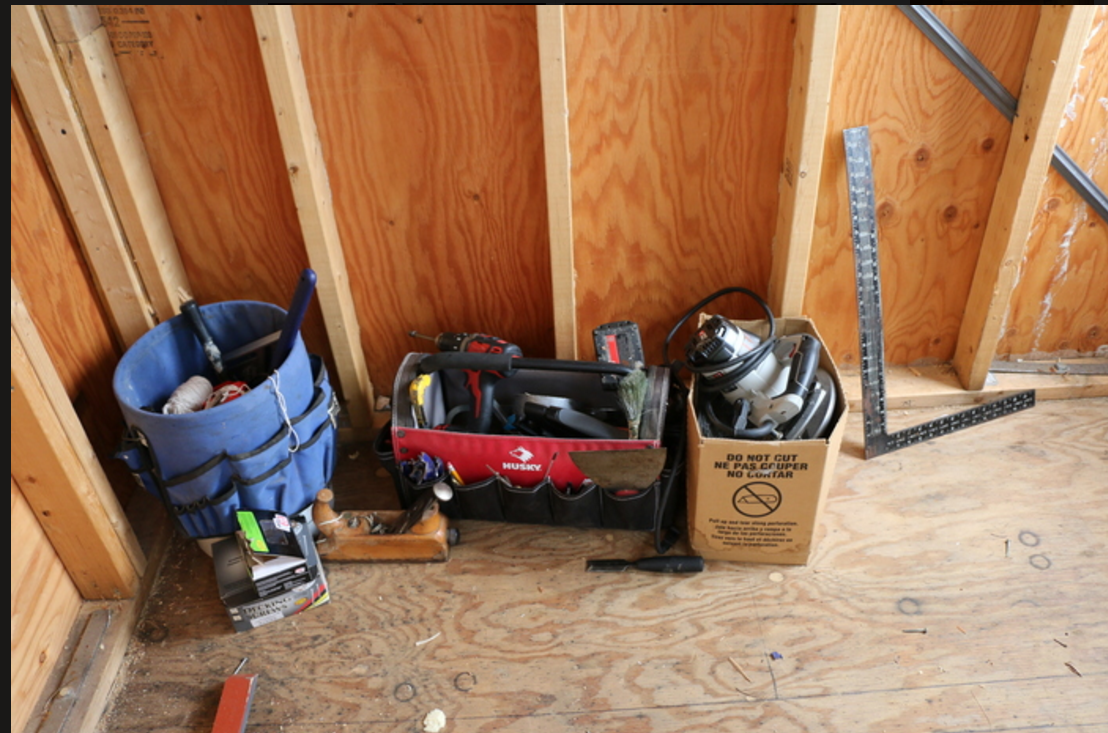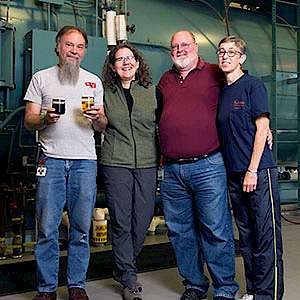
Fall 2016: Sustainability
Academics, energy use, climate change, natural resources, architecture and design, farming, health and wellness, population growth. Sustainability is a huge topic, one we’re addressing on campus with a commitment to attain STARS Gold status from the Association for the Advancement of Sustainability in Higher Education.
You’ll learn more about what’s happening on campus inside this issue, and you’ll also find a myriad of stories focusing on how Keene State alumni and other members of the College community are working toward sustainability in their lives.
Features

Online Extras
Living Off the Grid
“I don’t pretend to prescribe the details of this lifestyle to anyone. I think it’s very individual and personal. It fits Eileen and I pretty well because we developed, over 50 years, really, a lifestyle that suits our personalities and our circumstances more or less just right. It’s really no different than deciding on a career or where to live or who, if anybody, to form a lifetime relationship with.
“The first thing is knowing yourself and having some sense of your life direction and then trying to find the place – meaning job or career or hobby or person. A lot of that, to be honest, is pure luck. Coming across openings, people, places that fit. The magic doesn’t just happen like that. You have to at some point accept the fact that this, if not perfect, is OK, that we can make this work and work at it. This is relationships, job, where you are, what you have to do every day to keep your thing going, and find a way to make it work and be content, happy, doing it – rather than thinking, It could be better with somebody else, somewhere else, a different job, more money. It’s like, OK, this could be OK, let’s go for it and make this it.
“We’ve been married for 52 years; it’s been mostly pretty good. It’s as good as it could be for both of us. But it’s a lot of work. It isn’t easy to live with somebody, and it’s been great, and we’ve been lucky that it has worked out.
“So I’ll try to be more specific about sustainable living. I think the best thing is to think about: What do you really need to have a good life? How much money, stuff, electricity, water, is really necessary, and to try to figure it out for yourself, rather than how it was when you were growing up, or how it looks on TV. Try something out and see if you can be happy or content by using fewer resources. It’s very clear to me that everyone has to do something that fits their own situation, and it’s hard. It’s especially hard to be part of a modern developed world situation as we are and do something like homesteading. I feel like we found a balance, but we’re not 100 percent pure. We get on an airplane and fly to Scotland. It’s horrible. It takes away all the carbon credits that we get for hand-pumping water for more than a year. So we have compromised, big time. All of this isn’t altruistic. In other words, I’m not splitting wood because it’s good for the earth. I’m splitting wood because I love splitting wood. And because I’m splitting wood I’m saving the earth. We’re not growing vegetables to save the earth, we’re growing vegetables because we like doing that. It tastes good; it works for us.”
–Bill Elliott
Tiny House, Big Life
Check out more photos of Sara Voorhis’s tiny house in progress.
Sara’s tiny house reading suggestions:
- Tiny House Giant Journey blog
- The Tiny Life blog
- Tiny House Hacks
- Tiny Homes Shelter
- Tiny House Spotlight
Niko Niko Radish
A Life Altering Experience
By Cindy Gibbs ‘95
At the suggestion of a friend, I applied in January 2016 for a chance to travel to Japan with other American teachers to learn about the educational system and, in particular, The Japanese Ministry of Education’s focus on education for sustainable development. As a fourth-grade teacher in the Indian River County, Florida, public schools, I’ve been closely involved in teaching sustainability of our beloved Indian River Lagoon and its surrounds via the Environmental Learning Center and their Interconnections curriculum base. I wrote the application essay and the impact statement required for the application with my whole heart, because I truly believe in integrating our real world into our classrooms, and even more, making the real world the classroom. It’s what is best for children to learn with all of their beings, their minds, their hearts, their bodies, their imaginations.
I knew that hundreds of other teachers across the United States were applying for this award too, so I was utterly open-mouthed when the email arrived, announcing my acceptance as a participant in the 2016 Fulbright Japan-US Teacher Exchange for Education for Sustainable Development.
I’ve struggled with how to describe this when sharing with my friends and family, and to whomever else will listen. It isn’t just a trip or an exchange, it was a life-altering experience that has made me relook at how I plan for teaching, how I teach, how I parent my own two daughters, and how I exist as a citizen of the Earth.
I should explain that this program is not a traditional exchange in the sense that we American teachers went to the same schools where the Japanese teachers work and vice versa. Rather, the exchanging happens when the Americans and Japanese meet in San Francisco and then later, in Tokyo. During those meetings, called Joint Conferences, we exchanged ideas, beliefs, and educational philosophies. We exchanged friendship, and acceptance of each other’s differences, and we exchanged celebrations of our similarities, which, it is important to note, are much more in number than the differences.
The experience for we US teachers began with a four day joint conference with the Japanese teacher participants in San Francisco. The Japanese teachers had visited schools and places of cultural interest in and around Washington D.C. for twelve days at the end of April. The last few days of their American experience were at the Joint Conference I attended in May.
The Joint Conference consisted of several lectures about the origins of Fulbright Japan and the ESD program. We had keynote speakers and the Japanese teachers gave a lively performance about their trip to Washington D.C. To aid in understanding one another, Fulbright provided incredible real-time translation experts. We wouldn’t have survived without Hatagami-san and Matsui-san. Both men have the great talent not only to translate in real time, but also to add similar expression and tone to the translation to make the experience really come to life.
At the conference in San Francisco, I had the honor of giving a presentation about how my classroom methods fit the ESD model. I was proud to speak and to show photos about the wonderful Lagoon Days program in which all Indian River County elementary schools participate in partnership with the Environmental Learning Center in Vero Beach. I also told of the work I’ve done with the Learning Alliance and the Moonshot Moment initiative, which trains teachers how to implement performance and other authentic learning and teaching methods. Our four days in San Francisco were much too short; our friendships were blossoming and we were already sad to leave each other. It’s amazing how quickly you bond with someone who has the same passions and ambitions as you do. We all love our students, and are deeply invested in learning every way possible to do what is best for kids.
I arrived in Tokyo on June 22, after a 15-hour flight. We lodged at the Keio Plaza Hotel and Conference Center in the Shinjuku ward of Tokyo, a hub for entertainment and culture, as well as the Metropolitan Government Building and Shinjuku Rail Station, the busiest train station in the world. The hotel is lovely and the service gracious, as we found to be the case everywhere we traveled in Japan. The language difference was rarely an issue, as most Japanese speak English well, and the signage and imagery are frequently in English or easy to decipher.
Our first school visit was to Yanagawa Elementary School in the Koto ward of Tokyo. As we entered, we were handed name tag lanyards, and directed to change our street shoes into slippers provided for guests. This is common practice in many public buildings and all homes. Some Japanese have separate slippers for the main living areas of the home, the kitchen and the bathroom, so that germs stay put in each room.
Mr. Toshio Tejima, Principal, beamed with pride as he showed us around his beautiful school, and then set us free among his teachers and students. Our common languages were smiles and laughter as we watched the students in various classes studying and discussing water quality and water conservation, writing Haiku based on art they had created the previous week, and my favorite: observing and recording data on the growth cycle of dragonflies. Tables of PET water bottles, upcycled into dragonfly larvae incubators lined the third grade hallway. Several dragonflies who had recently matured and dried their wings were fluttering around. Children and adults alike stood transfixed, eyes to the ceiling, watching the dragonflies in wonder.
We ate school lunch with the children at nearly every school we visited. Lunch is prepared, not assembled, and delivered on carts to each classroom, piping hot and delicious. We enjoyed miso soup, a fish filet, bread and rice and vegetables, often sea vegetables, at all meals. The students themselves serve each other and there is always the pre-meal phrase of “Itadakimasu,” meaning “Thank you for the food,” or more casually, “Let’s eat!” Yes, we Americans ate with chopsticks, which delighted the children. Lively chatter and laughter filled the sun-filled classroom. At meal-time’s end, the students collected the trays and dishes, scraped any waste (I saw very little) into the garbage, and worked together to restore the classroom to order so class could continue.
On June 23, our team flew from Haneda Airport, Tokyo to Asahikawa Airport in Hokkaido, where we then boarded a bus to Shari, our evening stopping point on our way to our ultimate destination–Rausu. Shari (say Shad-ee) is located on the magically lbeautiful Shiretoko Peninsula. Shari town faces the Sea of Okhotsk, and if that sounds Russian to you, you are correct in your thinking. From the volcanic black sand beaches, you can see the Russian island of Sahkalin.
At this point in our trip, I was still adjusting to the thirteen hour time difference. Additionally, Shari is at roughly the same latitude as Seattle, and the sun rose at 3:30 am. I had neglected to close my hotel room’s drapes and rose at that early hour as well. Awake and excited to explore, I pulled on long pants, long sleeves and a sweater and ventured out into the desolate streets. Though it was June, the air temperature was 50 degrees, and as I would soon discover, the sea even colder than that! The sky and sea were the same shade of pearl gray, and the city streets were silent and empty. I was free to stroll past businesses and homes and quietly take it all in. Passing the fishing marinas and supply buildings which lined the small streets, I walked until I reached the beach, where I sat and breathed in the pristine salty air and dug my toes into the dark gray sand. My American teacher friend Barbara happened along, finishing up her morning early morning run, and we strolled along together, gathering shells and marvelling at the seascape.
In all of my wildest dreams, I had never imagined there could be places on this Earth as beautiful at Rausu and the Shiretoko Peninsula. I am certain that I hiked through the region with my mouth agape the entire time in awe of the natural majesty. The seaside town is inhabited by many commercial fisherman, and Kombu farmers and uni harvesters, as well as tourist services, such as Ever Green Whale Watch. We arrived at Rausu City Hall in the afternoon. We were pleased to meet the mayor and city council and to present them with gifts we brought from the United States. Every place we visited, one of the American group became the presenter of gifts from America. Japan is a very generous society. Gifts are given frequently and with great intention.
At City Hall, we were greeted by our host families. An intriguing part of this experience is the home-stay. Each of the participants was assigned a local family with whom we would spend twenty four hours. Fumimoto and Miku Sugawara and their teenaged son, Ryuoto, were my family, and I am thrilled to write, now, my lifelong friends. I speak approximately six words in Japanese, and Miku about the same, so we communicated with hand gestures and smiles until we reached her home by car, where we quickly logged my phone into their wi-fi and used Google translate to speak to one another.
Food is culture. To be honest, one of the reasons I was so excited about this trip was the food. Sushi, sashimi, ramen, yakitori. Mr. Sugawara is a salmon fisherman, and his wife, Miku learned to create traditional and not so traditional Japanese dishes at the hip of her mother, who owns a restaurant in Sapporo, also on Hokkaido. We could hardly utter a word to one another, but we stood at the refrigerator in their hi-tech kitchen, and Miku put droplets of condiments of her own creation on the back of my hand and we cheered together as each one tasted more delicious that the last one. They served me a feast for a Queen: salmon sashimi, sliced table-side from a fish caught just a couple of hours before, salmon roe from the day’s catch, tamago (Japanese egg omelet), udon, various sea vegetables. The taste tests went on and on, to my delight. I asked about Natto, a dish I had seen at the hotel in Tokyo, but was hesitant to try. It is fermented beans and although I am an extremely adventurous eater, this was truly unique. Of course, they had some in the cupboard, and I did try it at their urging. You’ll have to taste it for yourself sometime.
Education for Sustainable Development isn’t just about the land, it’s about connections among people. My host family gave me the experience of a lifetime, again, when we boarded an Ever Green Whale Watch boat and headed out onto the sea to watch Orca. I live eighty minutes from Sea World Orlando, and believe me, this wasn’t Sea World. The boat cruised out into the Sea of Okhotsk, and I marveled at the scenery, not really expecting to see whales. Suddenly, we stopped and Whooosh! Orca, tens of them, mother and babies, breaching, showing off, being adorable. I may have held my breath the whole time. Tears rolled down my cheeks for the entire boat cruise: what beauty, what majesty. Amazing.
We left Rausu for Tokyo on June 30, and though we were wistful for the mystique of Hokkaido, we knew our Japanese friends were arriving for our second joint conference. As a group of 20 now, we convened and heard messages of honor and hope from the Executive Director of Fulbright Japan, the Minister of Education of Japan, and alumni of the ESD program, urging us on.
The remaining days in Tokyo were where did our best work. We chose collaborative teams based upon interest and teaching standards, and thus created international group projects. My team, Niko Niko Radish, will be growing a variety of radish and other plants in our respective classrooms, and will be sharing our work and findings amongst my American classroom and two Japanese classrooms, one in Kyoto with teacher Kiyo Matsumoto, and one in Miyagi with teacher Rei Monden. We will grow plants together, record our findings together and share our cultural similarities and differences via a google group. Our children will be sharing and exchanging cultural information via food, art and writing. We plan to our families to share recipes using the produce we grow, and perhaps create a bilingual cookbook.
Fulbright Japan gave me a whole new lease on life and teaching. I cannot express enough the value of this experience. I encourage all teachers to apply.
Links to More Information
- Learn more about making a donation to Keene State.
- Visit the 1780 Farm’s website.
- Learn more about Keene State’s Alternative Break trips.
- Link to the Green Energy Times website.
Learn more about the Clean Cities programs:
Class Notes Links
Read the Cabinet Press story on Doris McQuade Rebidue ’34, who died June 27 at 103.
Listen to the podcast of Dave Burland ’86 and Dan Barth ’86.
